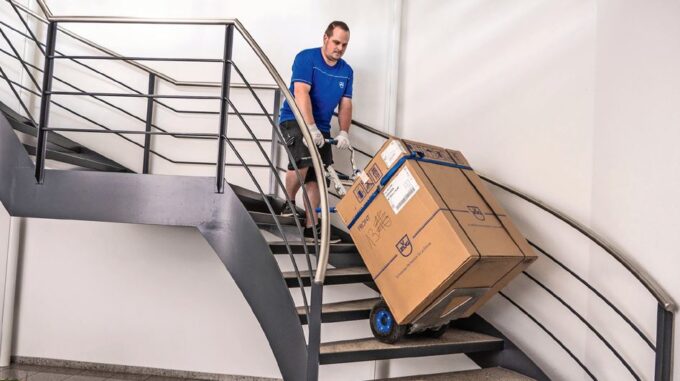Avoid physical stress
Around 670,000 employees in Switzerland suffer from physical impairments and are absent for an average of three days a year. However, the physical stresses are closely related to the workplace.

According to Suva, one day of lost work costs about 1000 francs. However, when employees leave the company earlier, this can also mean a major loss of know-how and costs for the individual companies. Stress due to occupational damage to the musculoskeletal system costs Swiss companies around two billion Swiss francs a year. The consequences of many physical overstrains are musculoskeletal disorders.
According to the European Business Survey on Emerging Risks (ESENER), around 60 percent of the population is affected by MSDs. The study also shows that 20 to 30 percent of companies underestimate the issue. According to Article 6 of the Labor Law, the employer is obliged to address all prevention measures that are appropriate for the company. The Accident Insurance Act also has an explicit regulation on the subject of load handling. Suva takes up these requirements with checklists and limit values at the workplace (guide values). For example, the reasonable loads for men and women are known. These are a maximum of 25 kg for men and 15 kg for women.
Increasing occupational diseases
However, the stresses are also related to the increasing pressure to perform in the respective industries. Work intensification, due to new forms of organization, has increased sharply in industry and the service sector since 2014. In general, the risk of increasing occupational illnesses is considered to be very high. Also according to the State Secretariat for Economic Affairs (Seco), companies should provide better protective factors and resources: Depending on work organization and autonomy, the pace of work can be reduced and the workplace adapted to the circumstances.
Suva has developed a prevention program for dealing with heavy physical loads. This program was initiated to reduce the industry-specific risks for occupational diseases of the musculoskeletal system. Suva focused on three projects during the development, including the home delivery sector, starting with beverage suppliers and nursing staff.
The prevention knowledge is also to be gradually adapted for the logistics and construction sectors, it was said in October 2021 at a presentation at the 18th Swiss Conference for Occupational Safety (STAS). The corresponding measures are already in the pilot phase before further campaigns are launched in the respective industries.
Load assessment
The checklist "Assessment of physical strain: lifting and carrying loads" uses guiding characteristics of a typical strain in everyday work, including the weight of the load, but also the posture and working conditions.
Further evaluation involves classifying the typical load according to daily time intervals. The posture and distance to a load also play a role in the situation analysis. Depending on the load situation, different postures are also visualized in the checklist, which can be ticked off as typical average values. In the case of other working conditions, employees are asked about typical obstructions, space conditions and stability to enable the companies to define measures. When assessing load handling, factors assessed include: Weight/force required, frequency/duration, posture, and conditions of execution.
According to Suva, a risk assessment must be carried out for loads of more than 15 kg for women and 25 kg for men. In the case of regular lifting and carrying or a load of more than four hours per day (at 7 kg for women and 12 kg for men), a risk assessment must also be carried out. Suva's prevention module on "Handling loads cleverly" is about the actual recognition of risks, understanding the correlations between complaints and activities, as well as personal behavior and also practicing new basic techniques. First, the actual and target situation in the company is discussed. Background knowledge on the anatomy of the spine and intervertebral discs as well as corresponding relaxation exercises provide an introduction to the topic.
More information
In the prevention module "Proper Lifting and Carrying" a Suva specialist visits the company and conducts a training session on work techniques with the employees. Beforehand, the typical stresses in the company are examined and a lot of advice is given on workplace design.The following Suva assessment methods are available for assessing physical stress in a work situation:
Workplace Check: www.suva.ch/66128.d
Lifting and carrying: www.suva.ch/88190.d
Pulling and pushing: www.suva.ch/88293.dThe following factors are assessed during load handling: Weight/force exerted, frequency/duration, posture, and execution conditions (environmental conditions).
In most cases, aids such as hand trucks, scales and carrying straps make it easier to transport a heavy load. If particularly heavy weights are lifted in pairs, this also means lifting less often and carrying less far. When it comes to personal protective equipment, shoes and gloves in particular can help with a secure grip and good stability. To lift a load properly, you should stand front and shoulder width in front of the weight, lift the load with a secure grip,keeping your back straight and using leg strength. Finally, the weight should be carried close to the body with an upright posture. However, the shoulders and elbows should always remain relaxed.
Handling loads cleverly
In addition to the aforementioned tools, Suva also offers numerous videos and presentations to raise awareness among employees, which downloaded free of charge from the website can be:Things to know about handling
with loads as well as short-cycle activities, static loads
and ergonomics can be found in the Tools for the assessment of physical loads.
This technical article appeared in the printed edition SAFETY-PLUS 1-2022. Want to read the full article in this issue? Then close right away here a subscription.









